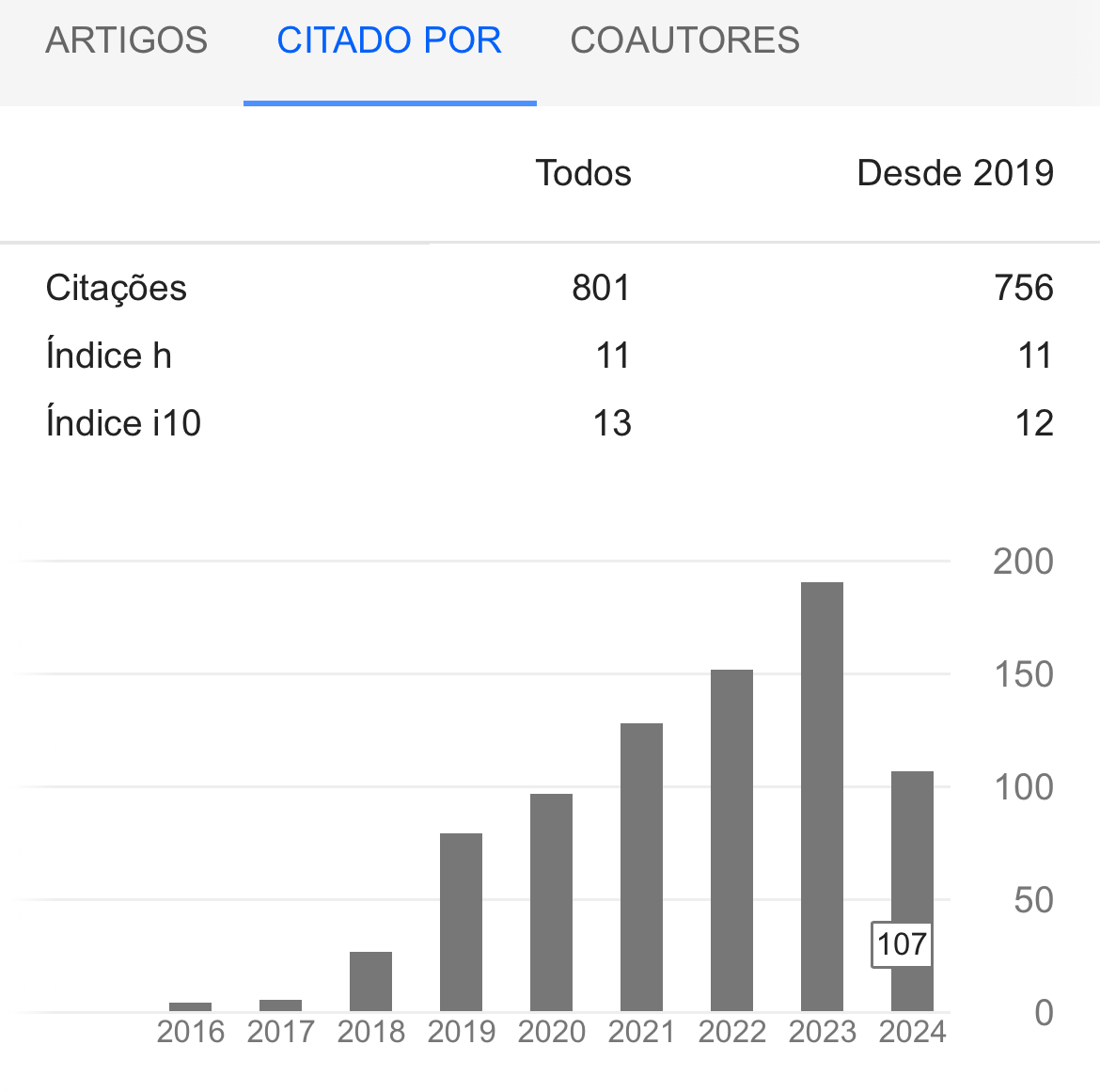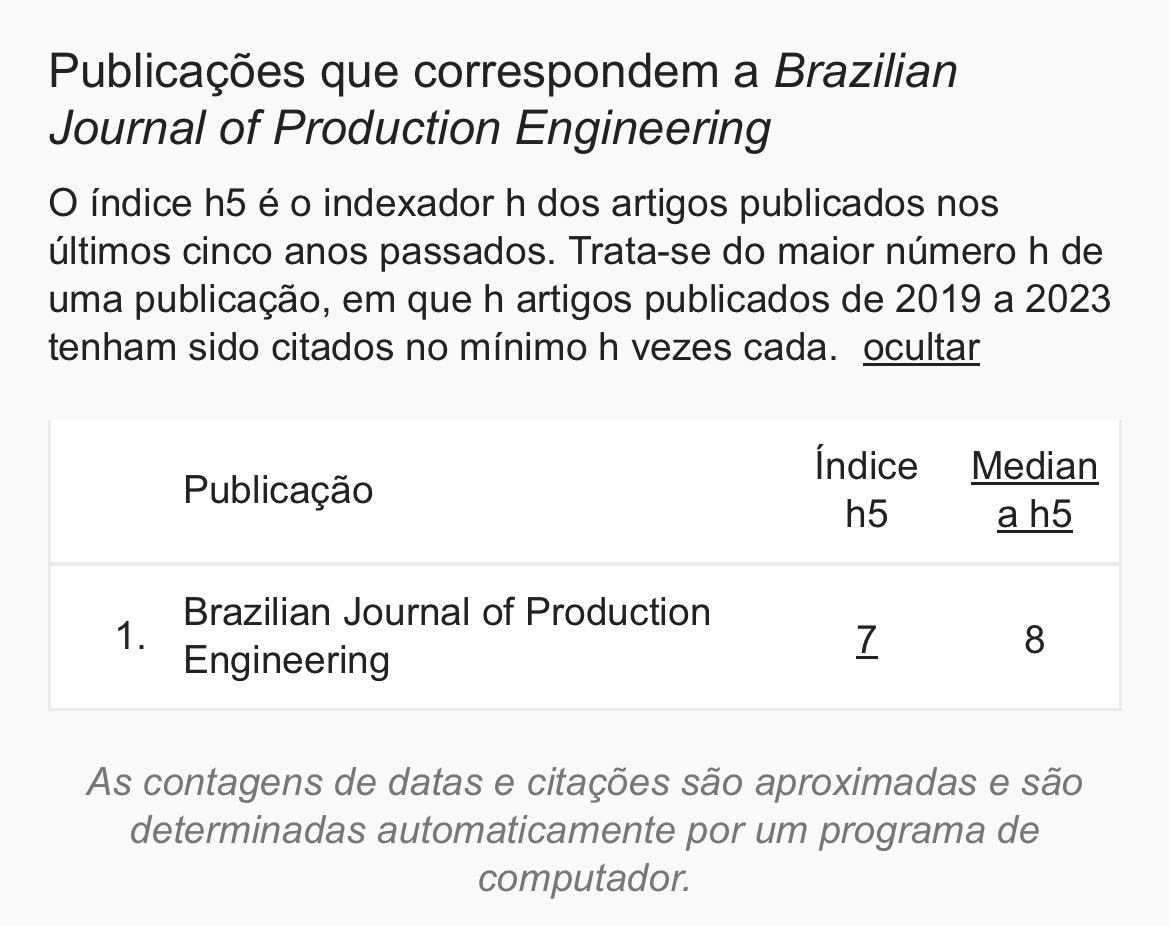O DESIGN CONTRIBUINDO PARA O FRONT END DA INOVAÇÃO
Abstract
Novas ideias levam ao desenvolvimento de novos produtos ou novos métodos de estruturar os negócios da empresa, sendo elas a base para a inovação. O processo de inovação pode ser dividido em três subprocessos: Front End, desenvolvimento e comercialização. Este artigo procura demonstrar por meio de uma análise bibliográfica como os pesquisadores do front end da inovação (FEI) tem utilizado o Design para contribuir neste processo. Este estudo obteve como principal resultado um panorama do período de 2008 a 2017, mostrando as formas de contribuição do design em cada elemento do FEI. A oportunidade é influenciada principalmente pela busca de novos mercados. As ideias por meio do processo de geração de ideias compartilhando o uso das mesmas ferramentas do design; e por fim, o conceito é influenciado pelo fortalecimento de imagem e marca tanto da organização como do produto ou serviço.Downloads
References
ASPARA, J. et al. Exploration and exploitation across three resource classes Market/customer intelligence, brands/bonds and technologies/processes. European Journal of Marketing, v. 45, n.4, p.596-630, 2011.
BAREGHEH, A.; ROWLEY, J.; SAMBROOK, S. Towards a multidisciplinary definition of innovation. Management Decision, v. 47, n. 8, p. 1323-1339, 2009.
BESSANT, J. et al. Managing innovation beyond the steady state. Technovation, v. 25, n. 12, p. 1366-1376, 2005.
BESSANT, J.; MAHER, L. Developing radical service innovations in healthcare: the role of design methods. International Journal of Innovation Management, v.13, n.4, p.555-568, 2009.
BOGERS, M.; HORST, W. Collaborative Prototyping: Cross-Fertilization of Knowledge in Prototype-Driven Problem Solving. Journal of Product Innovation Management, v. 31, n. 4, p. 744-764, Jul 2014.
BRETTEL, M. et al. Cross-Functional Integration of R&D, Marketing, and Manufacturing in Radical and Incremental Product Innovations and Its Effects on Project Effectiveness and Efficiency. Journal of Product Innovation Management, v. 28, n.2, p. 251-269, 2011.
BROWN, T. Design Thinking: uma metodologia poderosa para decretar o fim das velhas idéias. Rio de Janeiro: Elsevier, 2010.
BUZAN, Tony. Mapas mentais e sua elaboração: um sistema definitivo de pensamento que transformará a sua vida. São Paulo: Cultrix, 2005.
CARDILLO, A. et al. Computer-aided embodiment design through the hybridization of mono objective optimizations for efficient innovation process. Computers in Industry, v. 62, n.4, p. 384-397, 2011.
CASCINI, G.; FANTONI, G.; MONTAGNA, F. Situating needs and requirements in the FBS framework. Design Studies, v. 34, n. 5, p. 636-662, Sep 2013.
COOPER, R. G. The innovation dilemma: How to innovate when the market is mature. Journal of Product Innovation Management, v.28, n. 1, p.2-27. (2011).
COOPER, R. G.; EDGETT, S. J.Maximizing productivity in product innovation. Research Technology Management, v.51, n.2, p. 47-58, 2008.
CRESWELL, J.W. Projeto de pesquisa: métodos qualitativos, quantitativos e mistos. 3. ed. Porto Alegre: Artmed, 2010.
CREUSEN, M. E. H. Research Opportunities Related to Consumer Response to Product Design. Journal of Product Innovation Management, v.28, n.3, p.405-408, 2011.
DON-USA. Metrics Guide for Knowledge Management InitiativesReport, Department of the Navy. p.1-78, 2001. Disponível em: <http://scholar.google.com/scholar?hl=en&btnG=Search&q=intitle:Metrics+ Guide+for+Knowledge+Management+Initiatives#5>. Acesso em mar. 2013.
FIXSON, S. K.; MARION, T. J. Back-loading: A Potential Side Effect of Employing Digital Design Tools in New Product Development. Journal of Product Innovation Management, v. 29, p.140-156, 2012.
FONTOURA, Antônio M. EdaDe - Educação de crianças e jovens através do design. Florianópolis, 2002. 337 p. Tese (Doutorado em Engenharia de Produção) - Programa de Pós- Graduação em Engenharia de Produção, UFSC, 2002.
GARCES, G. A.; RAKOTONDRANAIVO, A.; BONJOUR, E. An acceptability estimation and analysis methodology based on Bayesian networks. International Journal of Industrial Ergonomics, v. 53, p. 245-256, May 2016.
GIL, A.C.. Como elaborar projetos de pesquisa. 5. ed. São Paulo: Atlas, 2010.
GILLIER, T.; PIAT, G. Exploring Over: The Presumed Identity of Emerging Technology. Creativity and Innovation Management, v.20, n.4, p.238-252, 2011.
GUO, L. Product Design and Financial Performance. The Design Management Institute. v.5, n.1, p. 5-20, 2010.
HE, B.; FENG, P. E. Guiding conceptual design through functional space exploration. International Journal of Advanced Manufacturing Technology, v. 66, n. 9-12, p. 1999-2011, Jun 2013
HE, B.; SONG, W.; WANG, Y. G. Computational Conceptual Design Using Space Matrix. Journal of Computing and Information Science in Engineering, v. 15, n. 1, Mar 2015.
HURMELINNA-LAUKKANEN, P.; HEIMAN, B. Finding the right problems to solve: value creation unpacked. Baltic Journal of Management, v.7, n.3, p.238-250, 2012.
IM, S., MONTOYA-WEISS, M. M.; WORKMAN Jr., J. P. Antecedents and consequences of creativity in product innovation teams. Journal of Product Innovation Management, v.30, n.1, p.170-185, 2013.
KEINZ, P.; PRÜGL, R. A User Community-Based Approach to Leveraging Technological Competences: An Exploratory Case Study of a Technology Start-Up from MIT. Creativity and Innovation Management, v.19 n.3, p. 269-289, 2010.
KO, Y. T. Modeling a hybrid-compact design matrix for new product innovation. Computers & Industrial Engineering, v. 107, p. 345-359, May 2017
KOEN, P.A.; et al. Providing clarity and a common language to the “fuzzy front end”. Research Technology Management, v. 44, n. 2, p.46-55, 2001.
LE MASSON, P.; HATCHUEL, A.; WEIL, B. The Interplay between Creativity Issues and Design Theories: A New Perspective for Design Management Studies? Creativity and Innovation Management, v.20, n.4, p.217-237, 2011.
LEON, N. The future of computer-aided innovation. Computers in Industry, v.60, n.8, p. 539-550, 2009.
LI, B. et al. Research on Design Innovation Approach to Enhance Product Value Based on Cost Control. In: (Ed.). 3rd International Conference on Education and Social Development. Lancaster: Destech Publications, Inc, v.129, 2017. p.1077-1081.
MALHOTRA, N.K. Pesquisa de Marketing: uma orientação aplicada. 3. ed. Porto Alegre: Bookman, 2001.
MANSOR, M. R. et al. Conceptual design of kenaf fiber polymer composite automotive parking brake lever using integrated TRIZ-Morphological Chart-Analytic Hierarchy Process method. Materials & Design, v. 54, p. 473-482, Feb 2014.
MARTINS, R. F. de F. A Gestão de Design como uma estratégia organizacional: Um modelo de Integração do Design em Organizações. 2004. 202 f. Tese (Doutorado em Engenharia de Produção) – Universidade Federal de Santa Catarina, Florianópolis, 2004.
MARZANO, S. Finding your sculpture. In: IDSA/ICSID CONNECTING’07 CONGESS, San Francisco, 2007. Disponível em <hhht://www.desing.phillips.com/shared/assets/desing/speakers/Connecting_07.pdf>.
MATHEWS, S. Innovation portfolio architecture. Research Technology Management, v.53, n.6, p.30-40, 2010.
MONTOYA-WEISS, M.M.; O'DRISCOLL, T. M. Applying performance support technology in the fuzzy front end. Journal of Product Innovation Management, v.17, n.2, p.143-161, 2000.
MOZOTA, B. B. Gestão do Desing:usando o design para contribuir valor de marca e inovação corporativa. Porto Alegre: Bookman, 2011.
NOBELIUS, D.; TRYGG, L. Stop chasing the front end process: management of the early phases in product development projects. International Journal of Project Management, v.20, n.5, p.331-3340, 2002.
OECD – Organization for Economic Co-operation and Development. Oslo Manual: guide-line for collecting and interpreting innovation data, 2005. 3. ed.
PARK, Y.; FUJIMOTO, T.; HONG, P. Product architecture, organizational capabilities and IT integration for competitive advantage. International Journal of Information Management, v.32, n.5, p. 479-488, 2012.
PEE, L. G. Customer co-creation in B2C e-commerce: does it lead to better new products? Electronic Commerce Research, v. 16, n. 2, p. 217-243, Jun 2016.
PICCINNO, F. et al. Multi-perspective application selection: a method to identify sustainable applications for new materials using the example of cellulose nanofiber reinforced composites. Journal of Cleaner Production, v. 112, p. 1199-1210, Jan 2016.
PIIRAINEN, K. et al. A scenario approach for assessing new business concepts. Management Research Review, v.33, n.6, p.635-655, 2010.
REID, S.E.; BRENTANI, U. The fuzzy front end of new product development for discontinuous innovations: a theoretical model. Journal of Product Innovation Management, v. 21, n. 3, p. 170-184, 2004.
REINERTSEN, D.G. Taking the fuzziness out of the fuzzy front end. Research Technology Management, v. 42, n. 6, p. 25-31, 1999.
SCHLECHT, L.; YANG, M. Impact of prototyping resource environments and timing of awareness of constraints on idea generation in product design. Technovation, v. 34, n. 4, p. 223-231, Apr 2014.
SCHOGGL, J. P.; BAUMGARTNER, R. J.; HOFER, D. Improving sustainability performance in early phases of product design: A checklist for sustainable product development tested in the automotive industry. Journal of Cleaner Production, v. 140, p. 1602-1617, Jan 2017.
SMITH, P.G.; REINERTSEN, D. G. Developing products in half the time. New York: Van Nostrand Reinhold, 1991.
STAPPERS, P. J., et al. Designing for other people's strengths and motivations: Three cases using context, visions, and experiential prototypes. Advanced Engineering Informatics, v. 23, n.2, p.174-183, 2009.
TELENKO, C. et al. A Compilation of Design for Environment Guidelines. Journal of Mechanical Design, v. 138, n. 3, Mar 2016.
TROTTER, P. J. A new modified total front end framework for innovation: new insights from health related industries. International Journal of Innovation Management, v.15, n.5 p.1013-1041, 2011.
WORMALD, P. Value proposition for designers - VP(d): a tool for strategic innovation in new product development. International Journal of Business Environment, v. 7, n. 3, p. 262-280, 2015.
ZHANG, F. L.; YANG, M. L.; LIU, W. D. Using integrated quality function deployment and theory of innovation problem solving approach for ergonomic product design. Computers & Industrial Engineering, v. 76, p. 60-74, Oct 2014.
ZHANG, Z. N.; LI, X. M.; LIU, Z. L. A Closed-loop Based Framework for Design Requirement Management. In: CHA, J.; CHOU, S. Y., et al (Ed.). Moving Integrated Product Development to Service Clouds in the Global Economy. Amsterdam: Ios Press, v.1, 2014. p.444-453.
ZOMERDIJK, L. G.; VOSS, C. A. NSD Processes and Practices in Experiential Services. Journal of Product Innovation Management, v.28, n.1, p.63-80, 2011.
Downloads
Published
How to Cite
Issue
Section
License
Copyright (c) 2018 Brazilian Journal of Production Engineering - BJPE

This work is licensed under a Creative Commons Attribution-NonCommercial-ShareAlike 4.0 International License.











































































